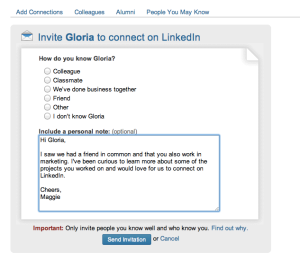
Soon after I entered the professional world, I was introduced to the debate about the generalist versus the specialist. Which one does our society value most and why?
The work environment nurtures specialists—people who can develop a strict focus on a subject, master it and contribute their expert opinions as needed. However, the world of liberal arts education, one that many of us are coming from, encourages a different type of reality. It pushes us to glimpse into different disciplines, expand our academic interests and develop a broad understanding of the world and how to engage with it. How are we supposed to reconcile this conflict? If the academic world raises us as generalists and the professional world values specialization, don’t we end up suffering from split personality? Which identity should one pick?
Liberal arts, as defined by the Merriam Webster dictionary, refer to the educational curriculum “intended to provide chiefly general knowledge and to develop general intellectual capacities as opposed to professional or vocational skills.” This definition sounds familiar. It’s aligned with the description Mount Holyoke College gives of academic requirements, “The College’s distribution requirement is designed to acquaint students with a wide range of knowledge and encourage them to explore new areas of interest.” In other words, a student here will have to fulfill requirements in humanities, science and mathematics, and social sciences.
Fulfilling these requirements, I distinctly remember, wasn’t necessarily something I looked forward to at Mount Holyoke College. As an International Media & Communications major, I wished I could focus on writing and didn’t have to worry about math or biology. My classmates shared the same sentiment. Yet we knew there were certain requirements that needed to be fulfilled so we carefully browsed through the course catalogue to pick classes outside our main field of interest.
For one of my science requirements, I ended up taking Introduction to Computer Animation. It wasn’t a subject I would have naturally gravitated towards. After all, it involved coding and learning formulas. Yet the class taught me to express myself in a new way, through building short movies with 3D models. Its appeal for creativity resonated with me and by the end of the semester, I spent almost every weekend in the computer lab, creating cylinders and cubes with excitement and showcasing my skills to others. In that class, I also made friends with students I wouldn’t have otherwise spent time with.
Interestingly enough, I witnessed the same type of dynamic in a complete opposite field. One of my closest college friends, a biochemistry major, decided to fulfill her humanities requirement by taking a journalism course. The class was outside her comfort zone and led to the lowest grade she had received in her undergraduate studies. However, she took this as a challenge. The professor’s constructive feedback motivated her. She worked hard in the class, gaining some critical writing and editing skills, and most importantly, an appreciation for a new field.
This appreciation for new fields triggers the flow of the human imagination. It piques our curiosity and helps us make associations between subjects that seemed unrelated. In this way we become creators of a remarkable culture, one full of remixes and unique interpretations that crisscross, borrow from one another and inspire us.
The ability to interpret situations in a unique way is what helps us solve problems in the professional world. It gives us the necessary context to connect the dots when we start new projects, communicate with customers and present in front of our coworkers. Thought leader and technology innovator Steve Jobs argued for the tremendous power stemming from the marriage between different disciplines. At the release of the iPad 2, he said: “It’s in Apple’s DNA that technology alone is not enough—it’s technology married with liberal arts, married with the humanities, that yields us the result that makes our heart sing, and nowhere is that more true than in these post-PC devices.”
Statements like this guide us in recognizing the colors of our reality. It’s not just black or white, sciences or humanities, generalists or specialists. Our academic, professional and personal lives are ripe with richness that often goes unnoticed. It is time to look around and recognize the diverse aspects of our identities.
I’m happy that my liberal arts education raised me as a generalist. I am also happy that my work taught me about the benefits of being a specialist. Do I have to identify with just one or the other? No, just like I don’t have to identify with only being a daughter, sister, friend or writer. The human mind allows for different skills and perspectives to coexist. It’s their coexistence that makes our identities flexible, constantly evolving and sometimes even a little bit contradictory.
Photo credit: truebluetitan
 Here I was, one of the attendees at the NERD International Women’s Day Mixer and full of inspiration from mingling with smart ladies working at local tech organizations. I was now listening to a panel discussing the future of women in technology. A blog post was shaping up in my mind about all the things we can do to encourage the participation of women in the rapidly evolving technology space when, all of a sudden, my train of thought was interrupted.
Here I was, one of the attendees at the NERD International Women’s Day Mixer and full of inspiration from mingling with smart ladies working at local tech organizations. I was now listening to a panel discussing the future of women in technology. A blog post was shaping up in my mind about all the things we can do to encourage the participation of women in the rapidly evolving technology space when, all of a sudden, my train of thought was interrupted.

